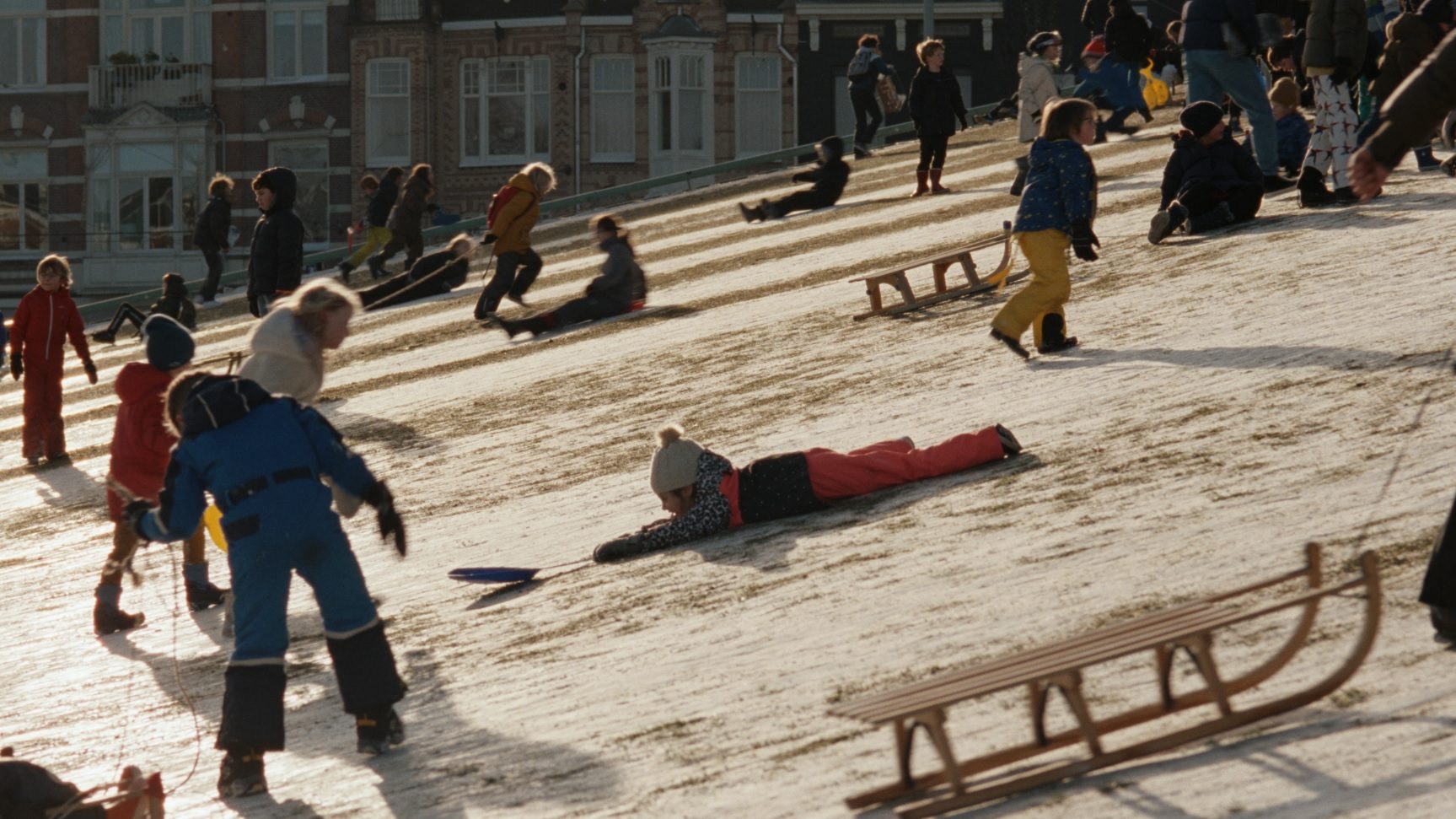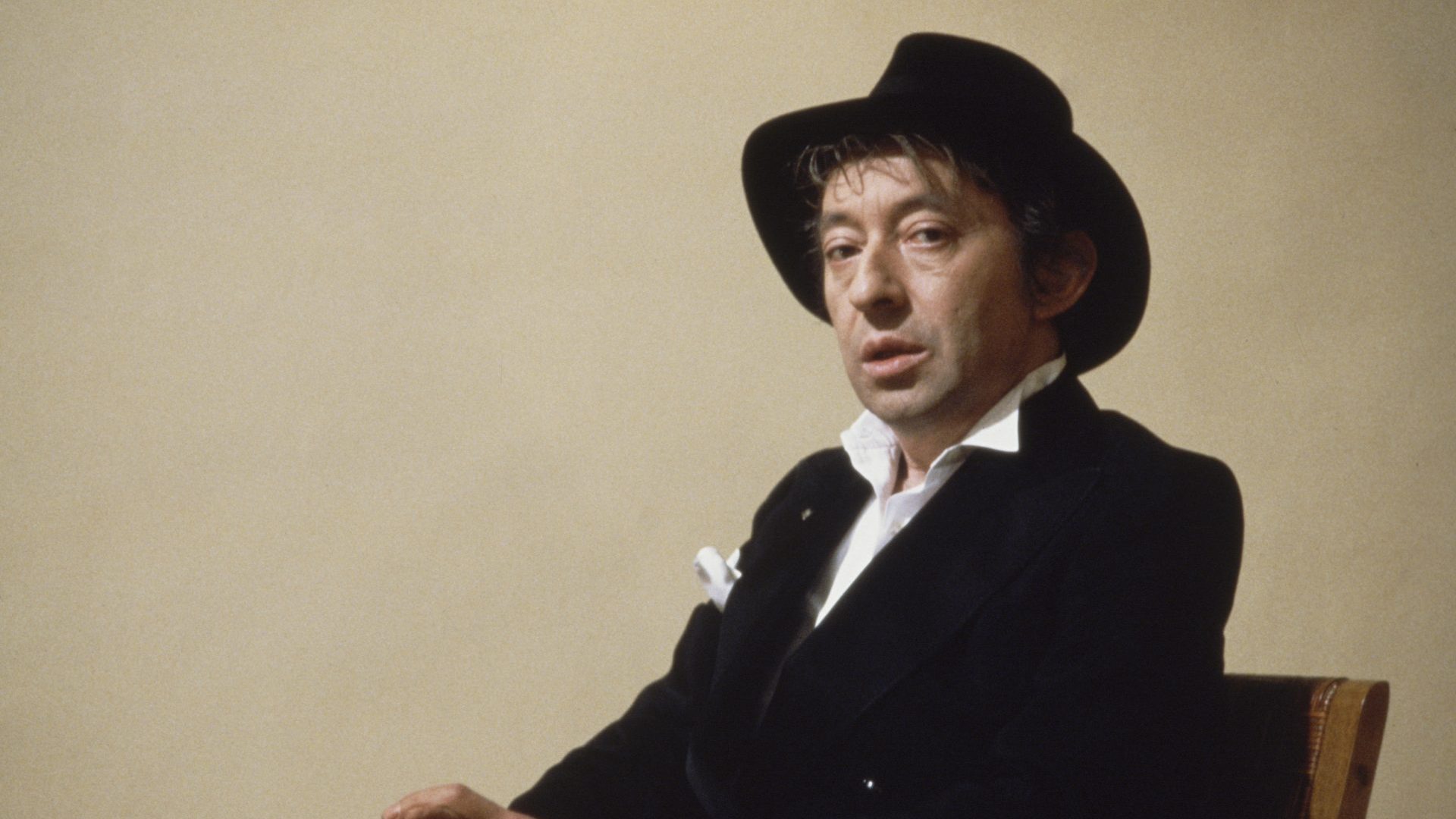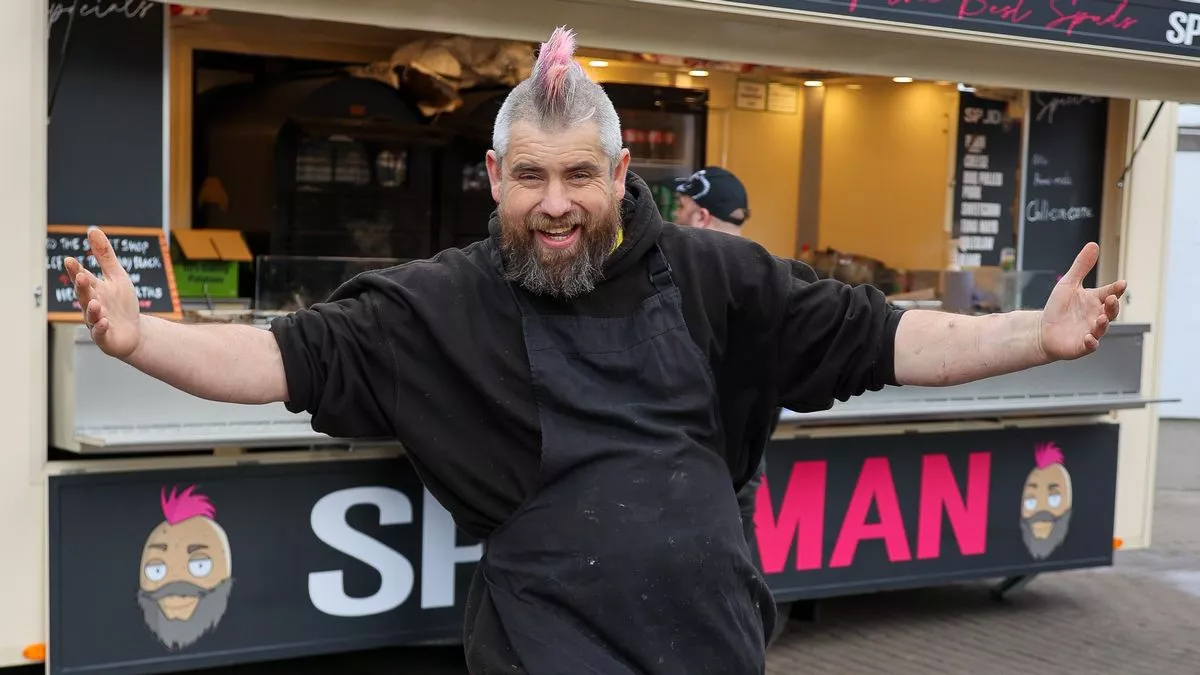Time is one of the crucial concepts of making – and watching – films these days. People moan to me about long movies, saying they can’t possibly sit through, for example, the new Scorsese because it’s over three-and-a-half hours; but then they’ll happily boast about their binge-watch of season two of Slow Horses, all 10 hours of it.
How long does it take to listen to an audiobook, let alone read one? And even the most routine football matches can now take over two hours while, with extra time and penalties, many tournament games easily stretch to three. And how long is five sets of Grand Slam tennis? Let’s not even get into Test cricket or days glued to Ryder Cup golf…
So why do so many movies come in for time-bashing? Steve McQueen’s latest film, Occupied City, a brilliant and unique documentary about how modern-day Amsterdam lives with its Nazi-occupied, Jew-murdering past, arrives with a running time of 262 minutes, ie just under four-and-a-half hours. This has certainly damaged its chances with awards voters this year – clearly a masterpiece, the film played at big festivals including Cannes, Telluride and New York, but hasn’t received a single nomination.
Which is nonsensical when you think that fun, poppy pieces about Wham! or musician Jon Batiste have found favour with Bafta. It can only be that voters were daunted by the run time.
“But the length and magnitude are necessary because of the subject matter,” wails the Oscar-winning, Turner prize-winning film-maker and artist. “People say ‘oh I can’t sit still for that long’ but you need the time to process the images, to go on a journey – this is not something you can reduce to soundbites because it’s a meditation, not a history lesson. There’s no drifting off, even if the viewer should go into a trance.”
I have to agree with McQueen. Not only because he’s a very forceful presence even over Zoom, but because he’s right. Not only could I sit through it, I could hardly remove myself from my seat, even for the 15-minute interval. Occupied City is mesmeric, a portrait of a city and its ghosts constructed in such a way that its layers are peeled back and coexist on the screen all at the same time, past and present alive together, evil twins.
There is no use of archive footage or talking heads. The only shots are of current Amsterdam, its canals, streets, buildings, squares, shops, schools and trains; while a disembodied voice narrates the stories of what happened in each of these individual places as the Nazis moved in… and over 60,000 Jews were transported out or killed.
The film is based on a book, Atlas of an Occupied City: Amsterdam 1940-1945, written by Bianca Stigter, a historian, artist and film-maker, and also Steve McQueen’s wife.
Her book is encyclopaedic, an alphabetical reference tome detailing the biographical facts of what happened at over 2,000 addresses in Amsterdam during the occupation. Anne Frank’s house – or rather the annexe where she and her family were hidden – on Prinsengracht is one of them, but it has no starring role in this film: her story, now one of the most famous in the world, was replicated all over the city.
The film goes through a mere 130 or so of the addresses in Stigter’s book – although McQueen and his team shot footage for all of them, plonking their camera outside and observing what’s now going on there – a pilates studio, a restaurant, a family home, ballet classes, a bakery, a department store, a train carriage busy with oblivious commuters. As the voiceover reminds us: from this platform, on this track, on a train just like this, thousands of Jews were taken to Auschwitz.
The juxtapositions are chilling when the technique of the film-making process dawns on you and the rhythm of it takes some getting used to. Stigter calls it a “radical approach.”
“You would think my big, thick book is the least likely candidate for a film adaptation, but here it is, and the people in it are alive, modern, not dusty relics, or in grainy footage but it’s all part of history, all taking place against a backdrop of time passing. You can’t get the same experience from reading a history text because now, with this film, you are immersed in the history itself as a living, breathing, present-day thing. The history is alive and talking to you, the people look like you and me.”
It might be surprising to some that McQueen has lived in Amsterdam for nearly 30 years. He’s a Londoner by birth of course, born in 1969, growing up in Ealing and becoming a Goldsmiths art student. He has made some vital films about London, including the spectacular Small Axe series which included courtroom drama Mangrove and the breathtaking party movie Lovers Rock, which felt like spending a whole night out dancing, in real time.
More recently, there was a BBC TV documentary about the New Cross fire and a wordless 24-minute film, Grenfell, which showed the burned, west London tower block where 72 people died. It was displayed at the Serpentine Gallery in Hyde Park. His upcoming feature later this year is called Blitz, set in wartime London.
His films and installations have always been preoccupied with time, his most famous title being the 2014 Oscar winner 12 Years a Slave, the story of Solomon Northup. Previous to Occupied City, Steve helped produce Bianca’s first film as director, Three Minutes: A Lengthening, which took three minutes of home movie footage of a Jewish ghetto in a Polish town just before the war, and examined in detail what eventually happened to the faces seen on the screen.
“We are both obviously interested in time, you’re right,” they say, hands up, when I confront them with the facts. They’re sitting in their apartment in Amsterdam, where they both live and work and where they wrote this film and lived while making it.
Says Stigter: “I suppose we both look at how to perceive history and how to keep it from being erased. It’s something we do perhaps unconsciously, but it’s very much a pattern in both our work.”
“I’m not interested in length, but you can say, yes, I’m interesting in time,” concedes McQueen. “I would hope Occupied City is like a classical concert in that there’s so much going on and you can project your own thoughts on to the narrative and sometimes it’s the layers of music that you focus on, or sometimes the words, or sometimes the whole thing comes together to impart meaning.”
He says that living in Amsterdam has always been, for him, like living with ghosts. It’s the city in which they raised their daughters but it’s also a 17th-century city where many of the original buildings are preserved and still in use, the present living in the past and vice versa. So much has happened within the walls and bricks and windows and on the street corners, but probably never as much as in the occupied period of 1940-1945. He tells me how he used to take his kids to school every day and be reminded that their school building was once the SS headquarters and interrogation centre, the “most feared address in the city”.
“And I dropped them off there every day and watched them skip through the door with their friends. But I couldn’t shake the ghosts of that building. But you get on with it, somehow.”
Get on with forgetting, does he mean? “Yes, I think that’s the right phrase. It’s a very easy thing to do, unless the artist reminds you to stop and think. I mean we see this in the film, there are a lot of young people who have a different relationship to the past, maybe an indifferent relationship. You can see they’re laughing and the kids are sledging, and they’re skating on the canal, and drinking and smoking their spliffs, and these kids might not give a shit about the past as they go about their lives. And maybe that’s right, you know, the freedom they have was fought for and won for them so that they can be free and not give a fuck. I wanted to show that, too.”
And he does. The film has many beautiful shots of Amsterdam. “I’ve lived here all my life,” says Bianca, “and it can still take my breath away with its beauty and history. But then if I stop and think, that history is shocking, that there was a round-up of Jewish people on this corner, or that this pretty bridge was blocked so Jewish people couldn’t get out. You don’t have to scratch very deep to find a layer here.”
Yet even at four-and-a-half hours, McQueen says all he has done is scratch the surface. He and his team shot 36 hours of film, every address in the book, so to speak, and they are preparing a 36-hour version for galleries and installations. “The idea is to encapsulate the whole city, like a sculptural artwork on film that reveals the layers beneath.” He sees no reason not to show it all. “It was very precarious work, shot on film, a million feet of 35mm footage, very precious stuff, so we reached a very precise and specific ritual of filming over 187 days, words and images working together.”
That’s monumental, I exclaim, a real task to create and to consume for anyone, something to take on. “Well yes,” he says, “it can be heavy, no doubt about that, it’s heavy stuff, but you are supposed to be disturbed by it, it should live with anyone who has seen it for days, maybe for ever as you go around this city, or your city wherever you are, because it could happen there too, that’s the point.”
The film’s voiceover is remarkable. Stigter used Helena Bonham Carter to narrate Three Minutes: A Lengthening but here, the dispassionate delivery comes from Melanie Hyams. McQueen explains she was only supposed to be a temporary, holding voice, but that her delivery was so right for it that they couldn’t think how it could be bettered and she became part of the process.
“She’s a voice from now, not an archive voice, and it feels like she’s finding things out as she’s reading,” he says. “It’s a delivery that’s also full of hope, you know, she’s a young voice so she’s the present and the future in that she’s someone just one step in front of the audience… just a step, but there’s surprise in her conclusions.”
Hyams’ telling of the stories of certain buildings – “here at 35 Beethoven Street lived a Jewish butcher named…” – often leads to her reading out an official report, from a newspaper or a registry, ending with a cursory: “Demolished” or “Erased” or “died in Dachau” or “taken out into the dunes and shot.”
One such building is known as the Skyscraper, which gives up six or so stories of what happened to the residents. “It was the first tall building in Amsterdam,” recalls Stigter, “built in the 1930s and it’s not really very tall but for us it was giant, hence the nickname, and it was very stylish and art deco and everyone knew it. But not what happened there.”
Through Hyams’ narration we learn how certain jobs were lost, freedoms slowly curtailed, certain residents disappeared as Nazi policies were enacted, by Germans, but also by locals simply doing their jobs, such as driving trains, or taking the census, or slowly banning Jews from shops and work, from refusing them services, and turning their neighbours in, sometimes the people in the next-door apartment, or just upstairs.
The stories of a whole city’s complicity are damning. Amsterdam sat by, indeed collaborated, while 75% of its Jewish population was murdered, or committed suicide, or was “taken into the dunes and shot”.
But as we see here, the city goes on, much as it did back then, and time goes on, history goes on, creating new stories: much of this film was shot during Covid, so there are new movements captured here, anti-lockdown protests and demonstrations, even while the Netherlands lurches politically to the right. It’s hard to read anything precise into these, if they mirror the past or usher in bass notes of dread about history repeating. I think it just shows time passing, humanity moving on. There is protest, which is encouraging, people questioning a system where once they surrendered. But there is mob behaviour, too, groupthink and peer pressure.
Underneath the new images, the history. Hyams, the narrator of the history, is Jewish, which McQueen admits “helped.” I wonder why he, who is not Jewish, and Stigter, who is not Jewish, felt compelled or even permitted to tell such a Jewish story. I don’t mean it offensively, but there is rightly much debate around the issue now, from casting Helen Mirren as Golda Meir and Bradley Cooper’s prosthetic nose as Leonard Bernstein. Would I be allowed/funded to tell a black story, for example?
McQueen bristles. “How could you not tell it?” he asks. “It concerns us all, it’s about humanity, just because they’re from a different group, how could we not care about these people? I don’t understand how you would think we could ignore that?”
I explain that he has answered my question. Antisemitism is rising catastrophically in Europe and the world, again, as he well knows, and I explain to him that his film – and his empathy with the process of institutional racism and a meticulous programme of erasure – is of great comfort as well as mighty art. But it is surely all too easy to ignore it, I say.
Stigter shakes her head sadly. “It’s something I could never understand, you know. Growing up here in Amsterdam, we have always really known what happened but it has been beyond my comprehension how it could happen. And now I see it and you can see it in this film, how it can happen, so smoothly, so silently, and disappear almost without a trace.”
Of course, the point is that this can happen again and, specific as it is to Amsterdam, to each house and shop and street number, that this could be Paris, or London, or Warsaw or Berlin.
I wonder what the reaction of Amsterdam’s own audiences has been. The film has been a relative hit there, for a documentary. McQueen explains that they held the premiere at a famous cinema, one which appears in the film, the Tuschinski Theatre. It was opened by a Jewish man called Abraham Tuschinski in 1921 and quickly became the most famous and largest picture palace in the country, with technical features, heating and air conditioning, and attracted stars to premieres.
In 1940, the Germans took over the programming, changing the name of the theatre to the Tivoli and showing only German films by the Nazi-run Tobis Film. Tuschinski and his family and business partners were officially dismissed from their own company and deported. As the narration goes: “Murdered in Auschwitz in 1942.”
It has been run by Cannon and MGM and is now owned by Pathé and, having been given a seal of approval from the King, it is now known as the Royal Theatre Tuschinski. Celebrating its recent centenary, it was declared by Time Out as the most beautiful cinema in the world. But, as Occupied City shows, on screen and even at its premiere, glorious restorations paper over many layers.
“Nazi soldiers and officers and functionaries and their wives and children used to sit right there, in the same seats, and these people sat right beside them, laughing and cheering,” remarks McQueen. “So, like I say, it’s heavy.”
No Jews were allowed. Until there were none left to come anyway.
No spoilers here, but the final scenes of McQueen’s film show a bar mitzvah at an Amsterdam synagogue, a multicultural, trendy-looking, liberal affair rather than anything more strictly orthodox. After all the stories of persecution and destruction from an unthinkable history, it represents a future and a survival. It’s some hope, some victory, I guess. It’s certainly some movie.
Occupied City is on release in UK cinemas from February 9. Jason Solomons will be chairing a Q&A with Steve McQueen and Bianca Stigter at the Barbican in London and beamed live to 50 cinemas on Sunday February 11
For more information visit https://www.modernfilms.com/occupiedcity/liveevent




